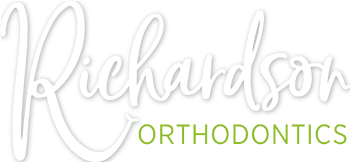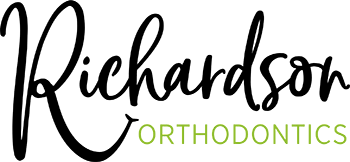Retainers – Richardson, TX
Keeping New Smiles in Place
Once it is time to remove your braces, your orthodontist will recommend some form of orthodontic retention to keep your new smile in place. Many patients do not understand the need for this type of appliance until they realize that teeth can easily shift back into their original position. At Richardson Orthodontics, Dr. Jones and Dr. Hanson do not want to see months or years of hard work suddenly begin to disappear, which is why they is pleased to offer a variety of retainers that are each designed to help new smiles remain in their new location. To find out which one will be right for you, search for an “orthodontist near me” and contact our office today.
The Importance of Retainers
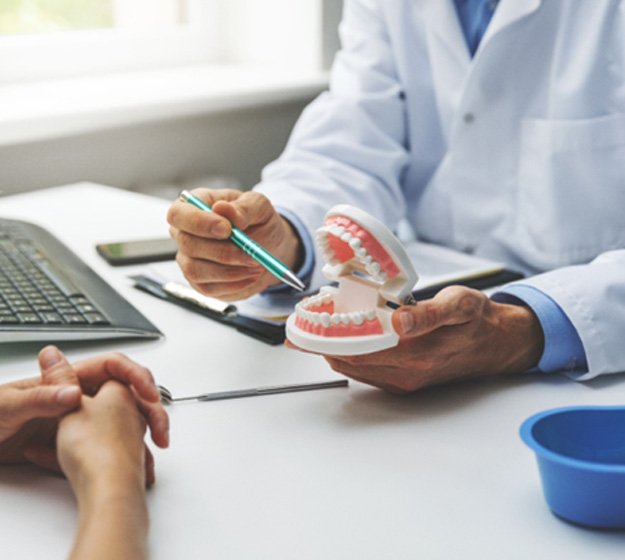
Many patients do not understand the need for this type of appliance until they realize that teeth can easily shift back into their original position. This is a phenomenon known as orthodontic relapse, and it happens to roughly 50% of patients! At Richardson Orthodontics, Dr. Jones and Dr. Hanson do not want to see months or years of hard work suddenly begin to disappear, which is why they are pleased to offer a variety of retainers that are each designed to help new smiles remain in their new location.
Different Types of Retainers
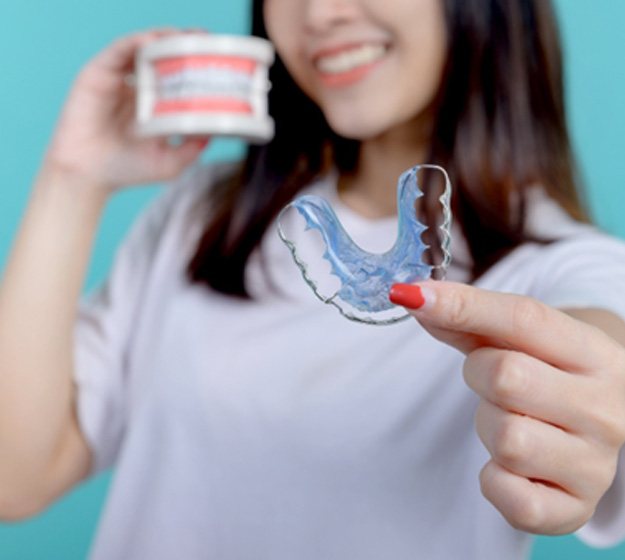
From anterior biteplates to plastic full coverage, we offer several types of retainers. The one we recommend for you will depend on your specific dental needs. Of course, we will review all of the necessary information with you at your appointment, but you’re more than welcome to read on to learn more about each type:
Standard Hawley or Wrap

Considered to be the most common retainer type, this oral appliance is best for patients who have a normal overbite before beginning orthodontic treatment. They’re made using a traditional impression or digital scan and are a great solution for individuals in need of long-term retention.
The disadvantages to these types of retainers are that they can be more costly, especially if created by lab technicians, and they often require adjusting. They’re also easy to break, the wires can be easily bent if not cared for properly, and they are best if used on individuals who do not have a sensitive gag reflex because of its posterior palatal coverage.
The good news is that although they require regular adjusting, this can be a good thing for patients in need of feeling the muscles in their jaw and face move cohesively with their bite. If wearing a retainer that is not adjustable, it can cause you to shift your bite and result in teeth grinding. And although these are easy to break if stepped on, the acrylic is a hard material that will not stretch over time and can last with proper care and maintenance.
Anterior Biteplate
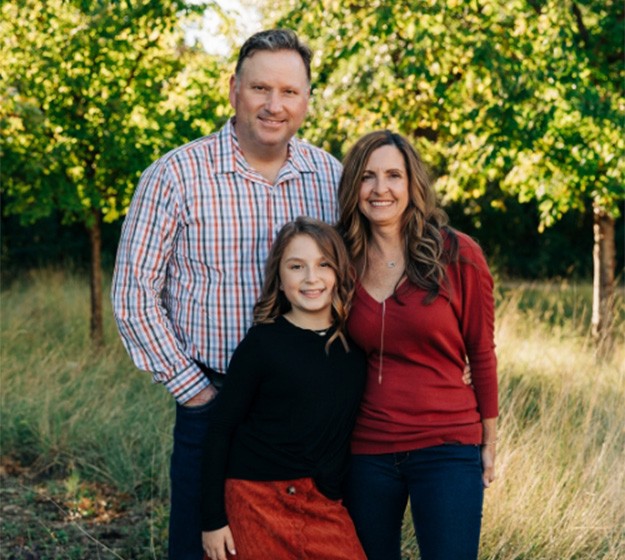
Made from a clear thermoformed plastic, it is modified to resemble the Hawley retainer. Patients with a severe overbite and/or over-erupted lower incisors can benefit from this type of retainer. Also, an anterior biteplate is great for someone who clenches their teeth or has strong, chewing facial muscles. Its main function is to keep front teeth in place while allowing posterior teeth to erupt.
Patients wearing this type of device mustn't wear it full time, as it can cause uneven posterior eruption changes. Dr. Jones and Dr. Hanson will recommend this particular device for individuals with a deep bite, not those with an open bite or vertical growth pattern.
Posterior Occlusal Coverage

If you have an anterior open bite or vertical growth pattern, the posterior occlusal coverage retainer will best suit your needs. With the ability to be added to a top or bottom retainer, the appliance is similar to a splint and will likely need to be adjusted when delivered for placement.
Fortunately, this oral appliance can provide additional stability, and in teenagers, there is the possibility of further control of any vertical changes should there be any underlying growth potential.
Plastic Full Coverage

Unlike other types of retainers that include hard acrylic and wires, this is made from clear plastic and created using a digital scan of your smile. Similar to clear, orthodontic aligners, it is considered a “final post-orthodontic retainer” and is a great solution for individuals completing orthodontic treatment and beginning the restorative phase. This is an especially great option for individuals with a missing tooth.
It can stretch out because of the plastic material, and you will likely require a replacement at some point in the future; however, it is a far more desirable option because it is clear and undetectable by others. Not only is it quickly made, but it can be adjusted, if necessary, and help hold adjacent teeth in place for individuals with missing teeth.
Splints

If you need a solution that will allow you to maintain better jaw positioning, facial muscles, and bite alignment, a splint is the right solution for you. Not only can it provide full coverage, but it is also ideal for individuals who require a long-term retention solution.
Caring for Your Retainer
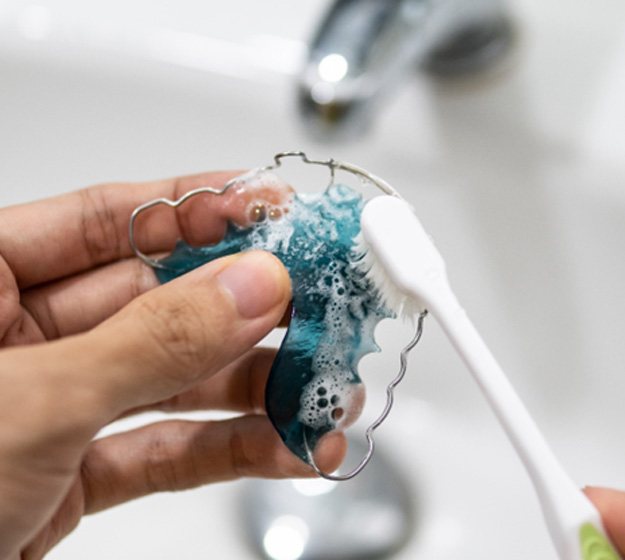
No matter which type of retainer you have, you need to care for it properly to prevent it from breaking, warping, or becoming smelly. We recommend:
- Not using hot water to clean your retainers.
- Brushing your retainers with a soft-bristled toothbrush each morning and evening.
- Placing your retainer in a protective case when you aren’t wearing it.
- Using a dentist-recommended cleaner to soak your retainer.
- Replacing your retainer when it chips or breaks
Retainers FAQs

We’ve heard many questions from patients and parents alike on not only how orthodontic retention works, but why it is necessary following orthodontic treatment. Our team at Richardson Orthodontics is happy to answer any questions you may have during your appointment. For added convenience, we’ve included some brief responses to some of the most common concerns that come up at our practice. Feel free to review them to find the answers you’re looking for!
Why is Orthodontic Retention Necessary?
Many people don’t realize this, but teeth are most likely to begin shifting back to their original positions immediately after their orthodontic treatment is removed (such as braces). For that reason, it’s imperative that you remain committed to wearing your oral appliance as instructed by our orthodontists to ensure you do not lose any of the progress you spent years achieving. In fact, a common issue many adult patients mention is their teeth shifting back after completing orthodontic treatment years ago, but failing to wear their retainer.
Is Relapse Common After Orthodontic Treatment?
While it may not be talked about so much, orthodontic relapse is actually fairly common. Some studies have estimated that over half of all orthodontic patients will experience some level of relapse within 10 years of finishing their orthodontic treatment, whether it was braces or another similar process. The most common cause of relapse is irregular retainer use as many patients underestimate the importance of wearing their retainer every day. Our office is happy to help you build habits for wearing your retainer so you never have to worry about relapse.
How Long Will I Need to Wear My Retainer?
Unfortunately, teeth are always on the move, even after they’ve been shifted following orthodontic treatment. This process is known as mesial drift and retainers are designed to help prevent this as you age. To ensure your smile stays straight, you will have to wear your retainer full-time anywhere between 3 and 6 months immediately following your orthodontic treatment, depending on your case. Some patients need to wear them full-time for 1 to 2 years. While you will need to keep your retainer for the rest of your life to keep your teeth in place, mesial drift will become less and less of a problem as you age. That means eventually, you should only need to wear them when you go to bed.
Should I Ever Replace My Retainer?
If you begin to notice small cracks in your retainer or you’ve dropped it and a large crack has been made, you’ll need to replace it. Small cracks can turn into much larger ones, reducing their effectiveness. It also creates more spaces for pockets of bacteria to grow. Be sure to keep your retainer in its case whenever not in use. While it depends on the retainer you use, some can last for a very long time when you take proper care of them. For example, standard Hawley retainers can last anywhere between 5 and 10 years!
